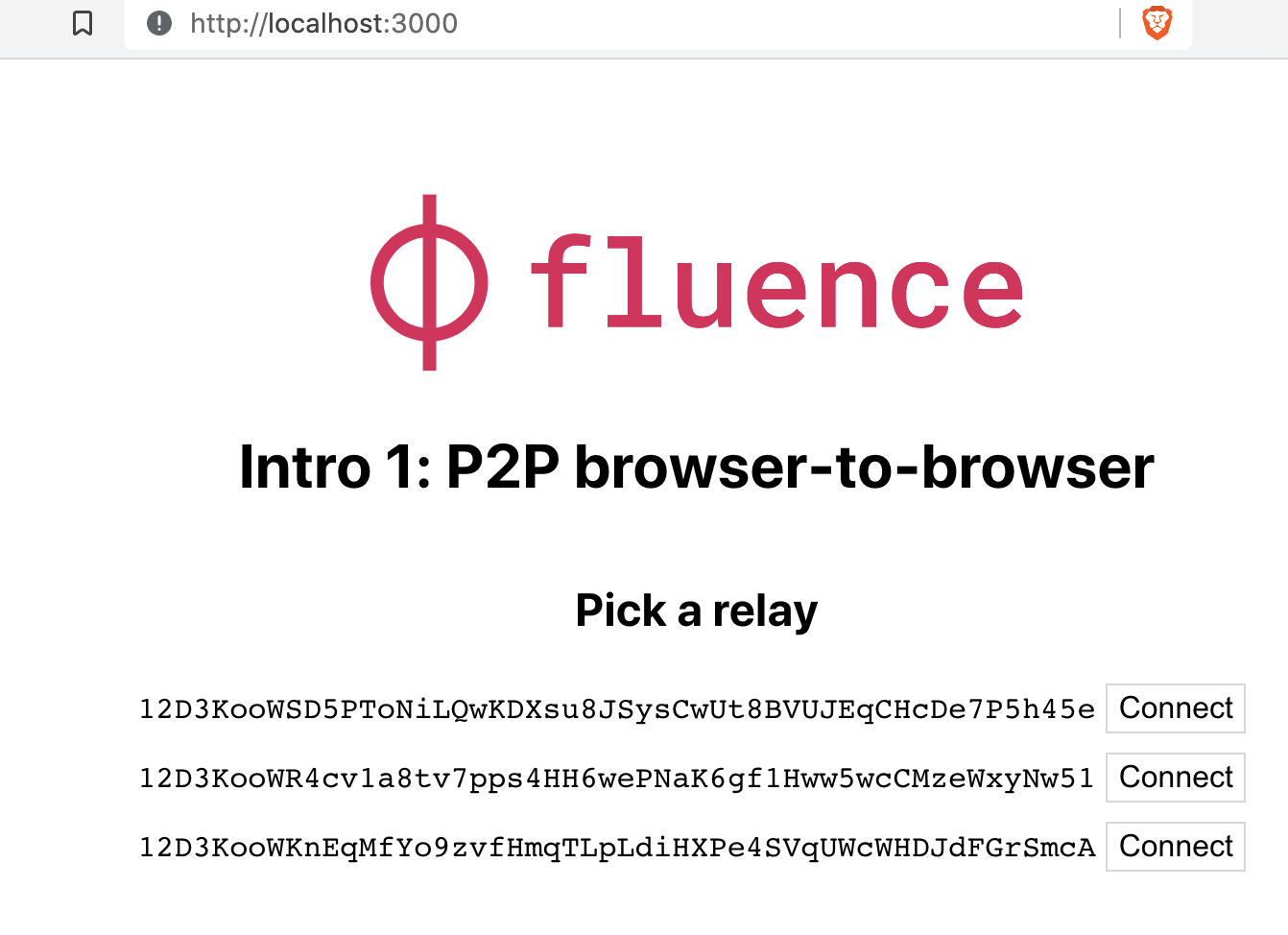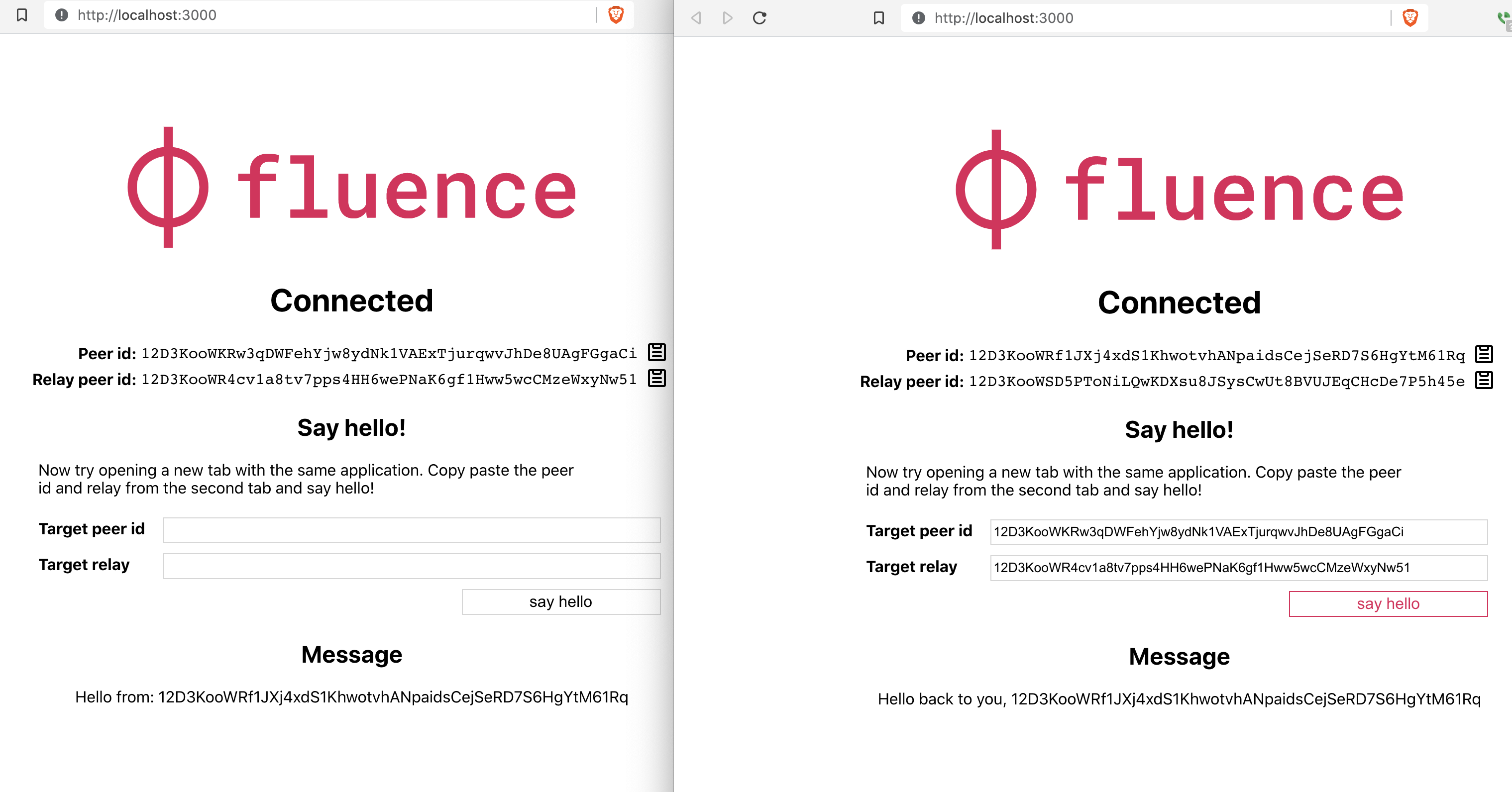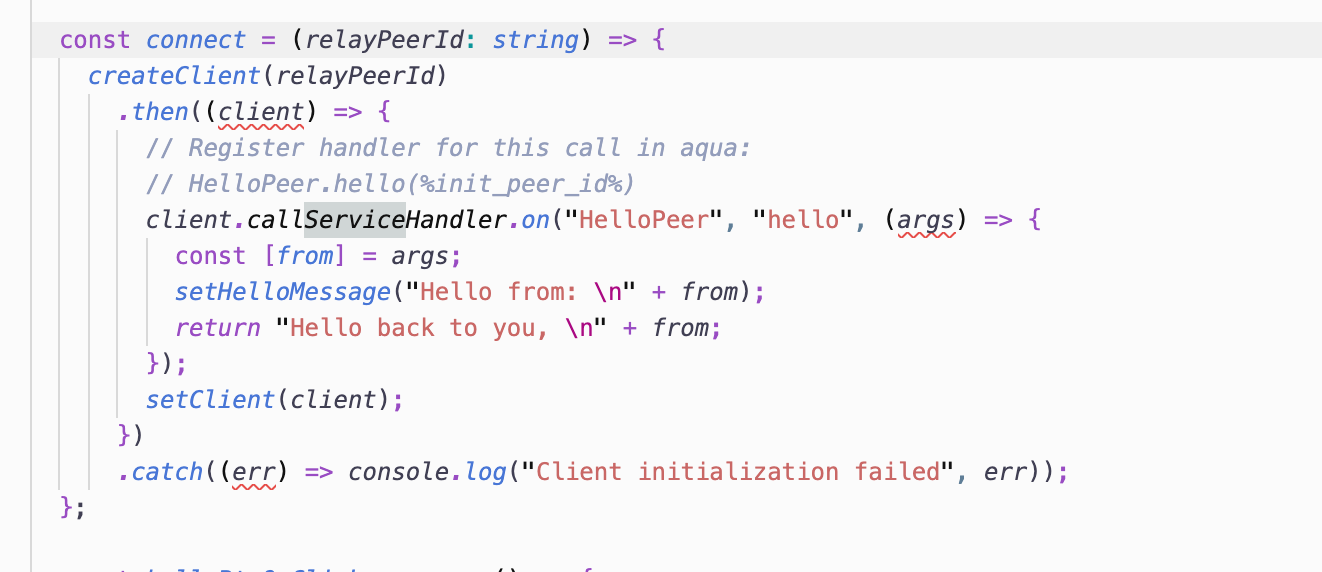4.1 KiB
1. Browser-to-Browser
The first example demonstrates how to communicate between two client peers, i.e. browsers, with local services. The project is based on a create-react-app template with slight modifications to integrate Fluence. The primary focus is the integration itself and React could be swapped with any framework of your choice.
Make sure you are in the examples/quickstart/1-browser-to-browser directory to install the dependencies:
cd examples/quickstart/1-browser-to-browser
npm install
Run the app with npm start :
npm run compile-aqua
npm start
Which opens a new tab in your browser at http://localhost:3000. The browser tab, representing the client peer, wants you to pick a relay node it, i.e., the browser client, can connect to and, of course, allows the peer to respond to the browser client. Select any one of the offered relays:
The client peer is now connected to the relay and ready for business:
Let's follow the instructions, open another browser tab, i.e. client peer, using http://localhost:3000 , select any one of the relays and copying the ensuing peer id and relay peer id to the first client peer, i.e. the first browser tab, and click the say hello button:\
Congratulations, you just sent messages between two browsers over the Fluence peer-to-peer network, which is pretty cool! Even cooler, however, is how we got here using Aqua, Fluence's distributed network and application composition language.
Navigate to the aqua directory and open the `getting-started.aqua file in your IDE or terminal:
And yes, fewer than ten lines (!) are required for a client peer, like our browser, to connect to the network and start composing the local HelloPeer service to send messages.
In broad strokes, the Aqua code breaks down as follows:
- Import the Aqua standard library into our application (1)
- Create a service interface binding to the local service (see below) with the
HelloPeernamespace andhellofunction (4-5) - Create the composition function
sayHellothat executes thehellocall on the providedtargetPeerIdvia the providedtargetRelayPeerIdand returns the result (7-10). Recall the copy and paste job you did earlier in the browser tab for the peer and relay id? Well, you just found the consumption place for these two parameters.
Not only is Aqua rather succinct in allowing you to seamlessly program both network routes and distributed application workflows but also provides the ability to compile Aqua to Typescript stubs wrapping compiled Aqua, called AIR -- short for Aqua Intermediate Representation, into ready to use code blocks. Navigate to the src/_aqua directory and open the getting-started.ts file and poke around a bit.
Note that the src/App.tsx file relies on the generated `getting-started.ts` file (line 7):
We wrote a little more than a handful of lines of code in Aqua and ended up with a deployment-ready code block that includes both the network routing and a compute logic to facilitate browser-to-browser messaging over a peer-to-peer network.
The local (browser) service HelloPeer is also implemented in the App.tsx file:
To summarize, we run an app that facilities messaging between two browsers over a peer-to-peer network. At the core of this capability is Aqua which allowed us in just a few lines of code to program both the network topology and the application workflow in barely more than a handful of lines of code. Hint: You should be excited. For more information on Aqua, see the Aqua Book.
In the next section, we develop a WebAssembly module and deploy it as a hosted service to the Fluence peer-to-peer network.





